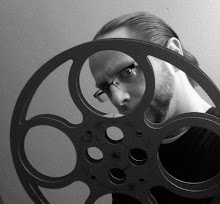Despite having won the top prize at this year’s famed Cannes
Film Festival, the French-speaking film BLUE IS THE WARMEST COLOR has not been
without controversy. Based on the graphic novel of the same name, the film has
been singled out for its long, graphic sex scenes between two lesbian lovers,
which has earned it the dreaded NC-17 rating here in the United States; a
rating which has unfortunately taken attention away from the movie behind it.
Adele (Adele Exarchopoulos) is a 15 year old student, who
after a breakup with her boyfriend, falls for Emma (Lea Seydoux), a lesbian, blue-haired
girl she randomly encounters in the street. Adele and Emma begin a romance
which lasts several years before encountering bumps in the road.
At its core, BLUE IS THE WARMEST COLOR is a true love story.
Beginning with the initial attractions, to the first date, to the first time of
intimacy, to the first signs of trouble to the heartbreaking breakup and aftermath.
It’s a simple story that has been done before, but here it works because French
director Abdel Kechiche never takes focus away from his characters, especially
Adele. The film never has a scene without Adele, who is experiencing love for
the very first time and takes us along with her every step of the way. Halfway
through the film, things jump ahead several years to show Adele and Emma’s
relationship suddenly on the rocks, and the sudden change in shift is not only
painful to Adele, but to us as well since we have been with her the whole way.
It’s a great love story executed greatly, and the fact that it is about lesbian
lovers is nearly irrelevant.
Director Abdel Kechiche has shot and edited a very
plain-looking, yet effective film. There is very little artistry being done
behind the camera, as everything is shot naturally and the dialogue is empty of
any melodrama or brevity. The film has a very natural feel to it, has virtually
no scoring, and often feels like voyeurism. Kechiche constantly fills the frame
with the characters faces, and thanks to some remarkable performances by his
two young actresses, every bit of emotional bliss and pain is up front and
center, and felt right down to the core. A few scenes feel like they run on a
bit long, and a few are redundant, which makes you feel every bit of the
three-plus hour running time.
Like the rest of the film, the sex-scenes (three in total;
the characters actually spend more time talking around the dinner table than
they do in bed) are very plainly shot. Where most filmmakers will hide and
obstruct things with dim lighting and shadows, Kechiche and his fearless actors
let it all hang out in very well-lit surroundings; nothing to hide here at all.
Despite a few glances of genitalia this is a soft NC-17, and it never distracts or derails the bigger story that
is going on. The very first sex encounter between Adele and Emma goes on for
seven minutes, and although it feels a bit gratuitous at first, by film’s end a
purpose behind it is revealed.
By the time the climax rolls around it suddenly becomes
clear that BLUE IS THE WARMEST COLOR is not only a love story, but a
well-hidden and well-executed coming-of-age tale. This was Adele’s first
venture into true love and heartbreak, and although we have seen her come a
long way through the film, when she walks off into the sunset it’s clear that
she still has a long way to go…and we would love to join her again as she
forges ahead. That’s the mark of a well-developed character in a well-developed
story. BLUE IS THE WARMEST COLOR has all the elements of a great film and knows
just where to put them.
BOTTOM LINE: See it


No comments:
Post a Comment
A few rules:
1. Personal attacks not tolerated.
2. Haters welcome, if you can justify it.
3. Swearing is goddamn OK.